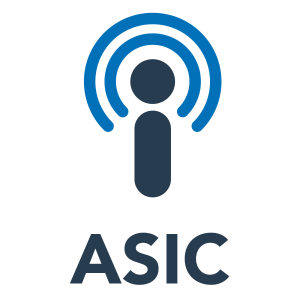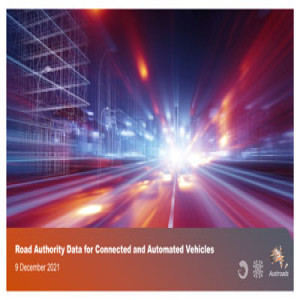
Austroads: Transport Research and Trends
Government
The Austroads Road Authority Data for Connected and Automated Vehicles (RADCAV) project studied the provision of agency-owned data to connected and automated vehicles (CAVs) addressing six high-priority data sets: roadworks, incidents, variable speed limit signs and lane control signals, static speed limits, traffic signals, and heavy vehicle access restrictions.
This webinar, presented by Vibeke Matthews and David Yee, details a data provision framework that can be used by an agency to build capability in providing data to vehicles. The framework consists of the following components:
Capability model – a model that describes the spectrum of capabilities for the provision of agency data relative to vehicle and road agency capability over time. This ranges from Day 0.5 Capability (decision and actions made by vehicle controller), to Day 4 Capability (decisions and actions made by the vehicle).
Reference conceptual architecture – a series of outputs that describe the business architecture and information systems architecture necessary to provide agency data to vehicles at various levels of capability.
Implementation guidance – advice on how to use the Capability Model and Reference Conceptual Architecture as part of a process to improve an agency’s data provision capabilities.
The data provision framework is flexible and does not prescribe one end-state for agencies. Agencies have the freedom to choose a target state that suits their desired outcome, available funds, and appetite for change. It also caters for changes in vehicle capability over time, given that the introduction of higher-capability vehicles may be some years away.
More Episodes
Development of Design Procedures for Lightly Bound Cemented Materials in Flexible Pavements
 2020-12-16
2020-12-16
 163
163
Improved Guidance on Interrupted Traffic Flow Theory
 2020-12-03
2020-12-03
 127
127
Best-Practice Approaches to Road Freight and Communities
 2020-11-26
2020-11-26
 128
128
Outcomes from the Long-Term Monitoring of Austroads Sprayed Seal Trials
 2020-11-17
2020-11-17
 130
130
Implications of Pavement Markings for Machine Vision
 2020-10-21
2020-10-21
 135
135
A Holistic Investment Prioritisation Framework for Road Assets
 2020-10-08
2020-10-08
 146
146
Updated Roadside Design Guidance: Crash Risk Evaluation Procedure Background
 2020-10-06
2020-10-06
 121
121
Optimising Project Delivery Performance
 2020-09-29
2020-09-29
 122
122
Updated Roadside Design Guidance: Crash Risk Evaluation
 2020-09-22
2020-09-22
 101
101
Framework and Tools for Road Freight Access Decisions
 2020-08-20
2020-08-20
 117
117
Draft National Prequalification Scheme for Temporary Traffic Management
 2020-08-18
2020-08-18
 101
101
Draft National Training Framework for Temporary Traffic Management
 2020-08-17
2020-08-17
 81
81
Classifying, Measuring and Valuing the Benefits of Place on the Transport System
 2020-08-13
2020-08-13
 84
84
Standards Australia: Bitumen and Related Materials for Roads
 2020-08-11
2020-08-11
 89
89
Vehicles and Technology: Future State 2030
 2020-08-06
2020-08-06
 83
83
Procurement Decision Tool: A Case Study of the Toowoomba Second Range Crossing
 2020-07-31
2020-07-31
 88
88
Tactical Urbanism: Streets for People
 2020-07-21
2020-07-21
 192
192
Transport Modelling for Project Managers
 2020-07-09
2020-07-09
 118
118
Introduction to the Life Cycle Costing Framework and its Application to Sealed Roads
 2020-07-01
2020-07-01
 103
103
Introduction to the Life-Cycle Costing Framework and its Application to Unsealed Roads
 2020-06-30
2020-06-30
 66
66
Create your
podcast in
minutes
- Full-featured podcast site
- Unlimited storage and bandwidth
- Comprehensive podcast stats
- Distribute to Apple Podcasts, Spotify, and more
- Make money with your podcast
It is Free
You may also like

City Manager Unfiltered


Potencial Americano


The ASIC Podcast


The Chris Plante Show


Red Eye Radio


- Privacy Policy
- Cookie Policy
- Terms of Use
- Consent Preferences
- Copyright © 2015-2024 Podbean.com



 iOS
iOS Android
Android